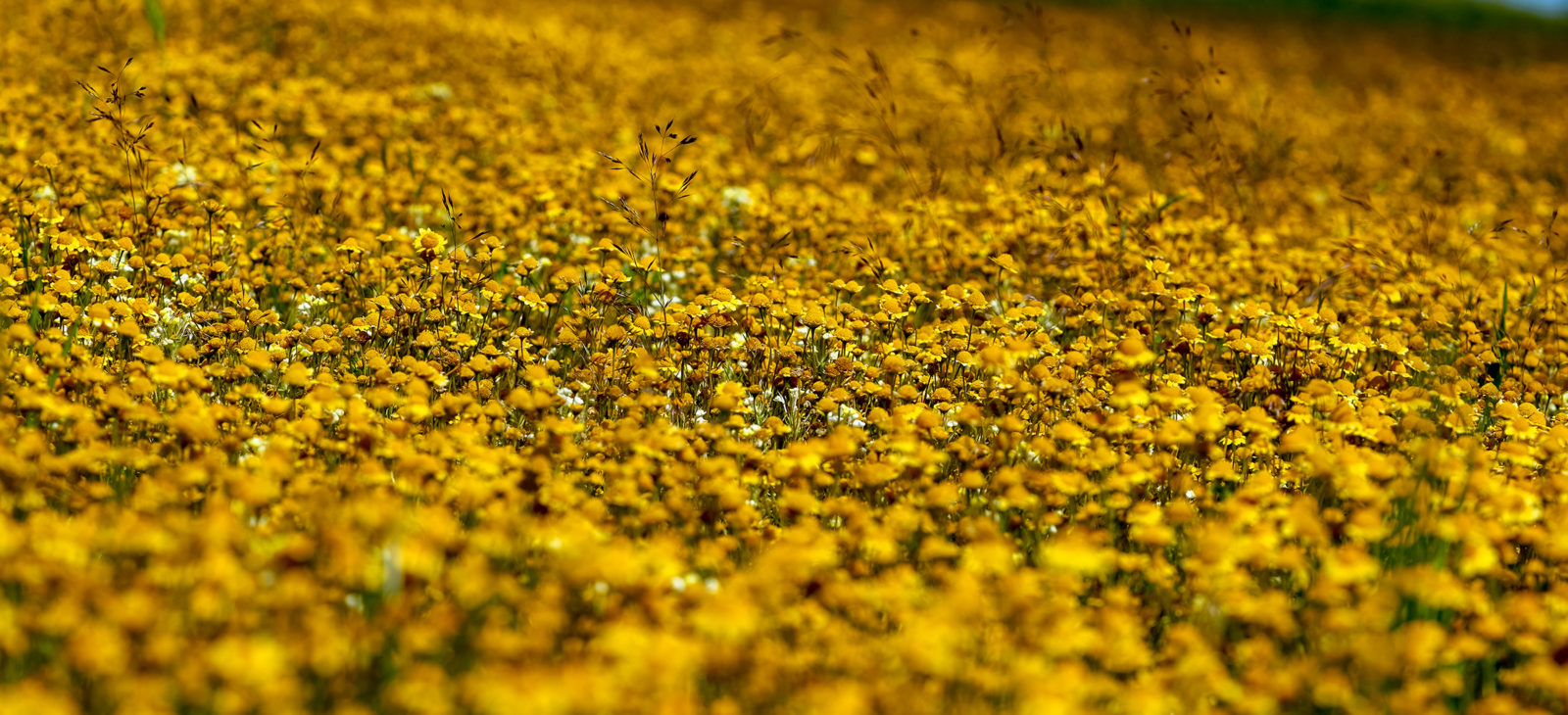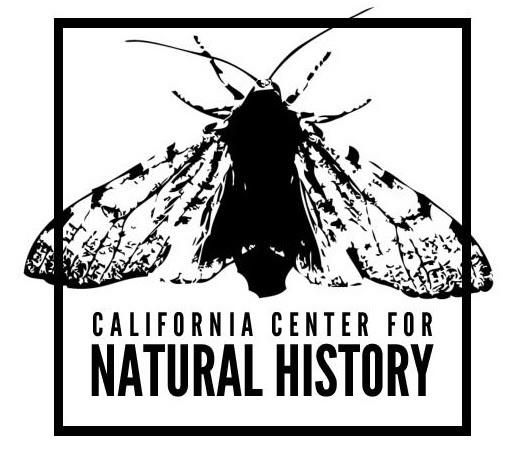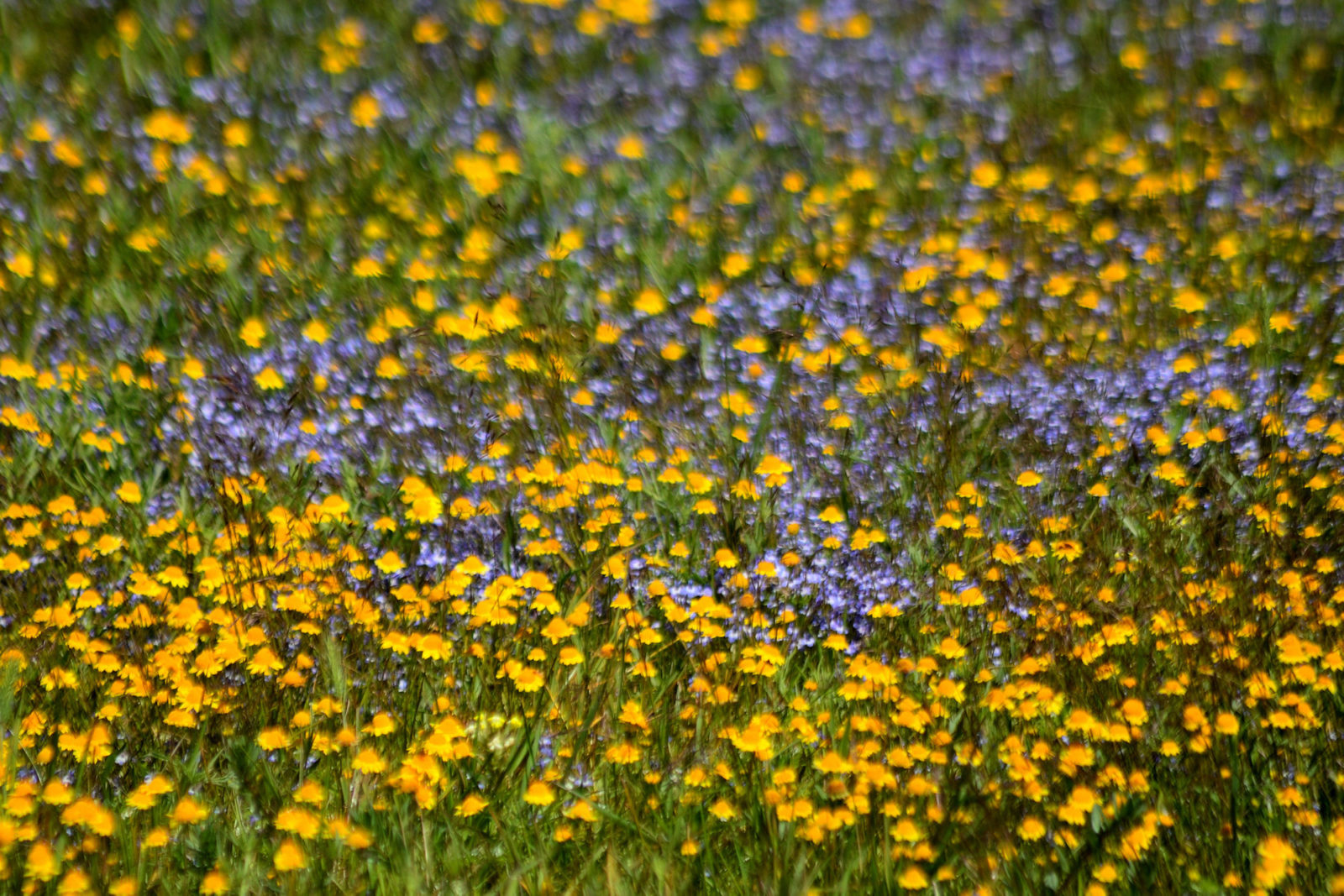How much damage does trampling do to wildflowers?
No other state is as iconic for its flora as California, so it’s no surprise that thousands of Californians have flocked to Southern California to experience wildflower heaven in this year’s “super bloom.” But as social media users post glamour shots of themselves smothered in wildflowers, others have raised concerns about tourists stepping on or trampling rare wildflower habitats.
California is home to 7,269 native plant species and 56 percent are endemic, meaning they’re not found anywhere else but the Golden State. You don’t have to join the throngs in Southern California to see a super bloom — nearer the Bay Area one of the best ways to see high diversity, as well as rare and endemic species, is in our spectacular vernal pools. But these habitats are particularly susceptible to damage by people going off trail, even more than vast poppy fields.

Vernal pools are defined by a hardpan that percolates slowly, creating special soil conditions. When water floods the hardpan it puts unique pressure on plants. As the season progresses and the water recedes, you’ll find different wildflowers at different stages of inundation. Butter ‘n’ eggs (Triphysaria ssp), white meadowfoam (Limnanthes alba), Downingia, and other native plants evolved to take advantage of these differentiated soil conditions. “Vernal pools harbor unique diversity, whereas wildflower fields occur on a much wider scale and are not endangered, and over most of their range these plant communities are not very diverse,” says Dr. Dean Taylor, a retired industry field botanist.
When wildflowers are crushed they can’t produce seeds, and most species in a vernal pool are what is called “r-selected” species, meaning their reproduction strategy is to rely on an enormous number of seeds every year. Since vernal pool wildflowers are small and mature at different times as water recedes, even someone trying to be careful walking off trail can cause many unwitting casualties.
There’s a second, more overlooked part to trampling, which is the long-term effect on soil and the community of life beneath the surface. Interestingly, there is very little scientific literature on the effect of compaction on wildflower communities. However, agricultural studies reveal that severe compaction negatively alters soil properties. Underground, mycorrhizae and soil microbes work together in a symbiotic relationship with the plants. Fungi and microbes bring nitrogen and phosphorous to plants in exchange for some of the plants sugars. Even stepping lightly compacts the soil and alters the soil structure. Compaction reduces oxygen levels, access to water, and presses some minerals together in a way that makes the minerals difficult for plants and their symbionts to access.
Severe compaction, as might happen by a person running or jumping, or by lots of people walking over the same route, breaks up vast underground networks that move nutrients around. The social trails made by people attempting to get glamor shots in flowers can end up creating plant islands isolated from the bigger underground network. Disturbance generally favors what are known as r selected species like vernal pools flowers, but disturbance that includes extreme compaction prevents even these plants from getting a foothold.
The urge to get a picture-perfect shot in a sea of wildflowers is understandable. But crushing plants and compacting soil leaves the area worse for the next person who wants to enjoy one of the our state’s iconic treasures. When it comes to conserving wildflowers, there’s much that’s outside an individual’s control. Trampling is something preventable that we can all avoid to be better stewards of California native plants.

Ask the Naturalist is a reader-funded bimonthly column with the California Center for Natural History that answers your questions about the natural world of the San Francisco Bay Area. Have a question for the naturalist? Fill out our question form or email us at atn at baynature.org!





